On this page we give photos and give information of a tree trunk swarm rescue of bees and rehoused. The progress the swarm makes daily.
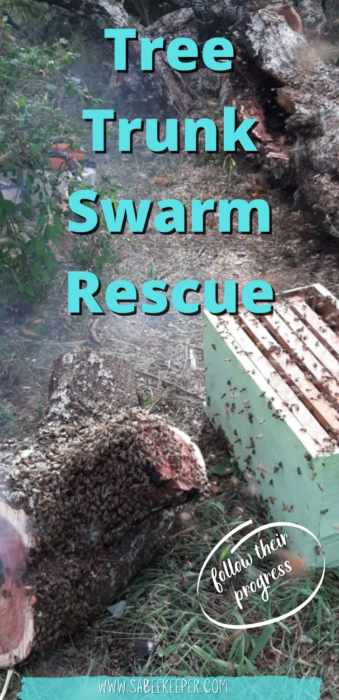
Tree Trunk Swarm Rescue
First Step.
In Vilcabamba, Loja, Ecuador. A land owner had to cut a tree down and first they had to obtain
a bee box to rehouse the bees that were in the trunk of the tree.
The Bees in Ecuador are not that plentiful. Therefore any rescue of swarms and re-homing of the
bees is essential. Our friend Pepe obtained the catching box that Danny build and used the bee
suits and equipment to help get the swarm safely in a box. Just using a smoker to gently calm the
bees as well as make them leave the area they occupied, then the swarm of bees enter the new home.
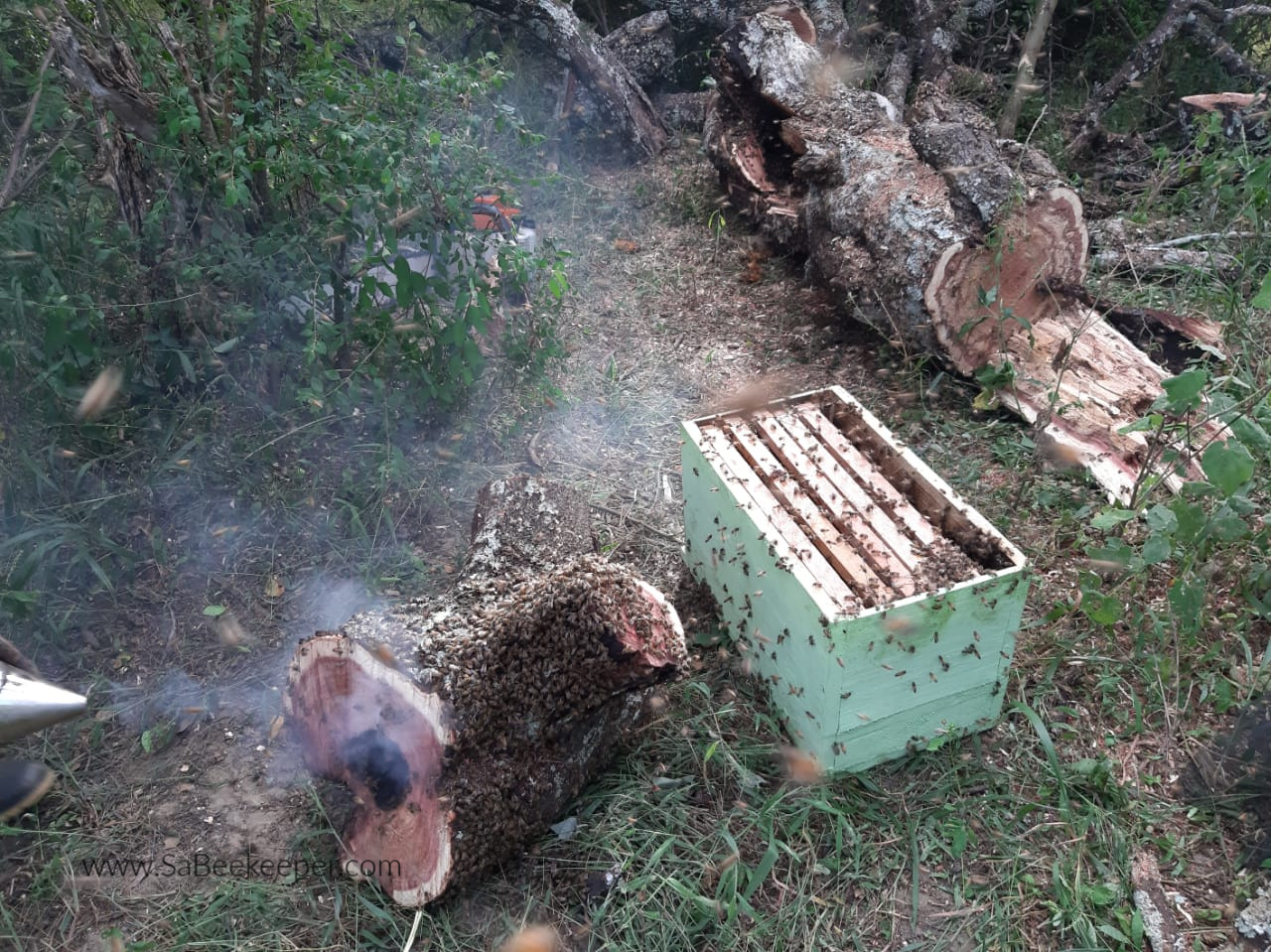
The tree trunk that was cut and swarm that was rescued. As above.
They waited for evening and covered the catching box with a mosquito gauze to obtain air as it
was a very hot day. The box of bees was brought to our house and was placed on a small store
room roof. We will let it settle for a while then relocate the new box of bees to a safer place.
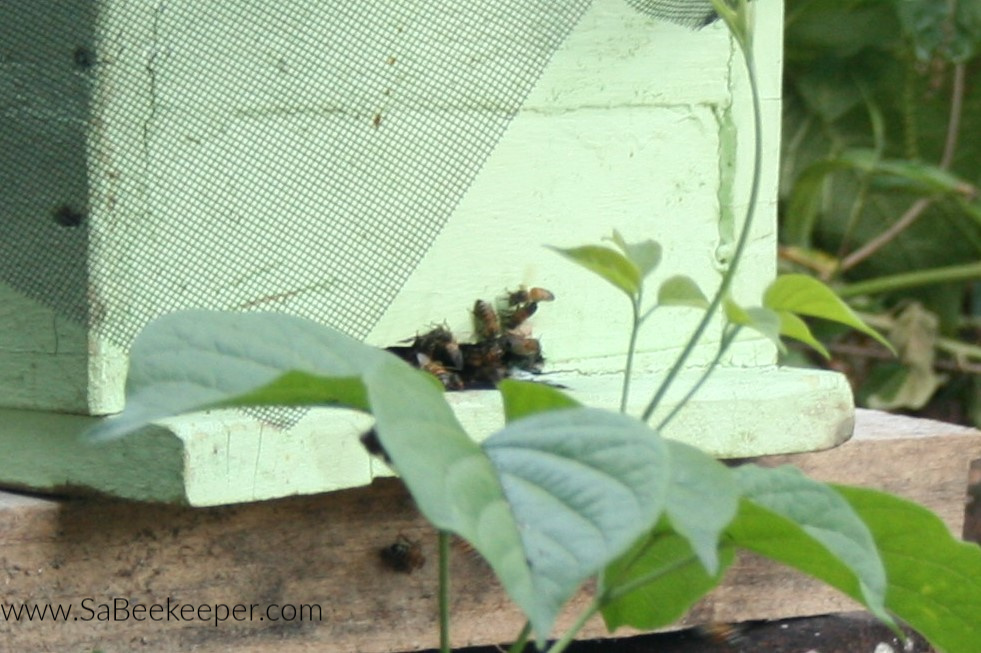
The second next step.
Next day of the tree trunk swarm rescue.
By mid morning they were happy flying out and coming back to the hive. Seeking food and
getting used to their surroundings.
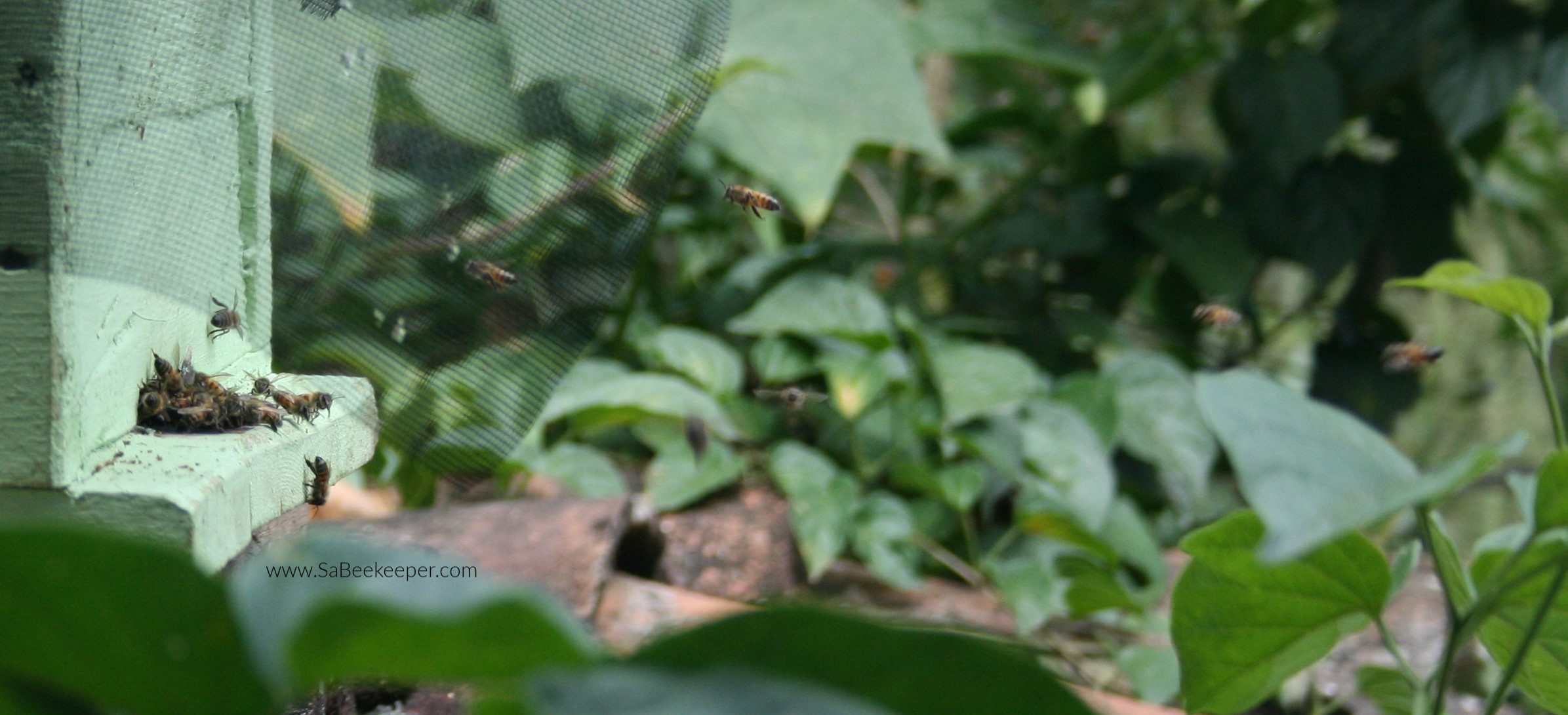
The bees were exploring the area and gathered all around and inspected the tiled roof as well.
This was mid day and it was getting hot.
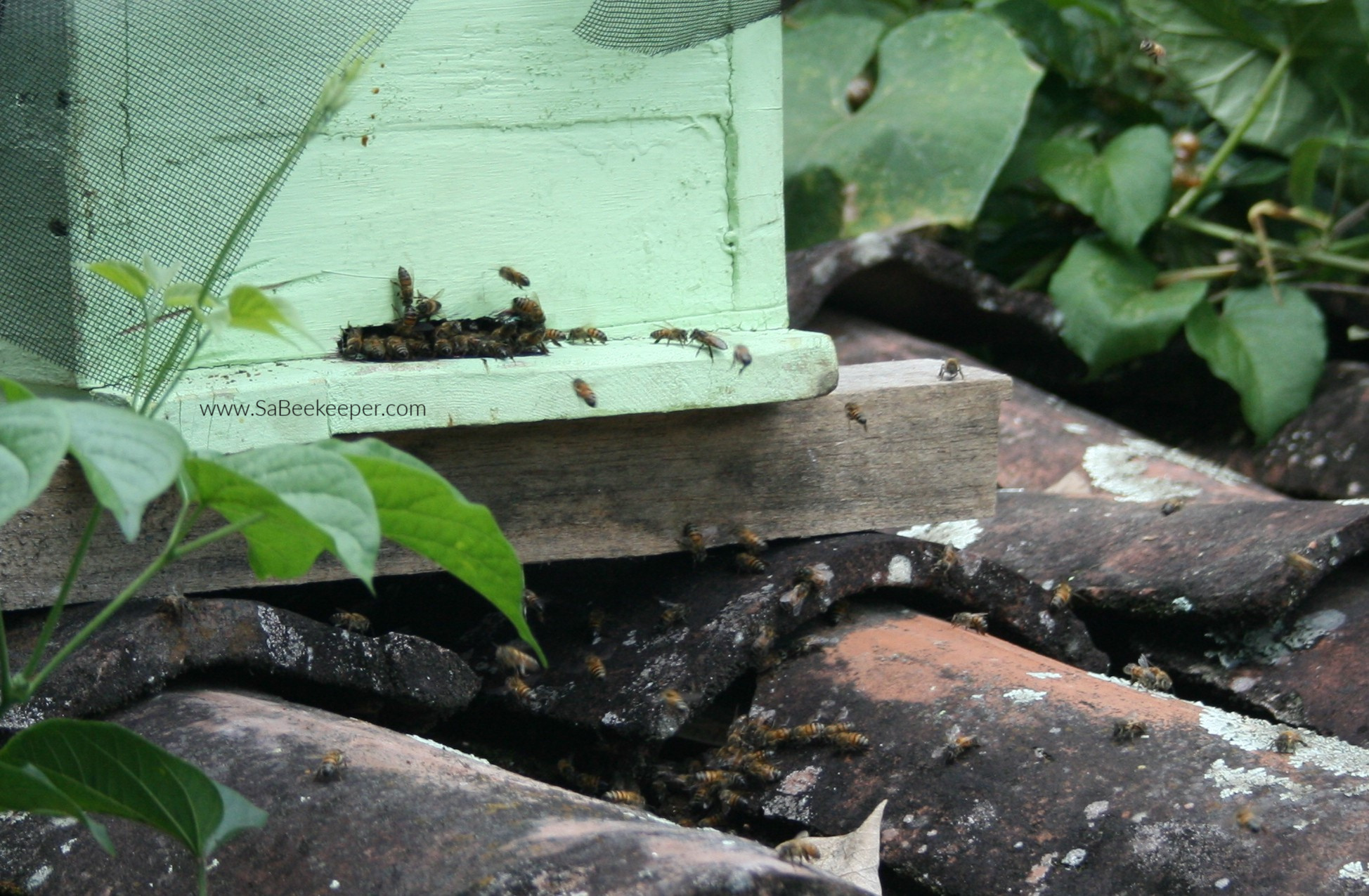
Busy little bees fighting to get into the entrance of the catching box. There were some of their
combs carefully placed inside and the queen was there as well. In this way the bees will not
leave the hive without the queen. Hopefully she is happy there. The entrance with a lot of bees
trying to come in and out.
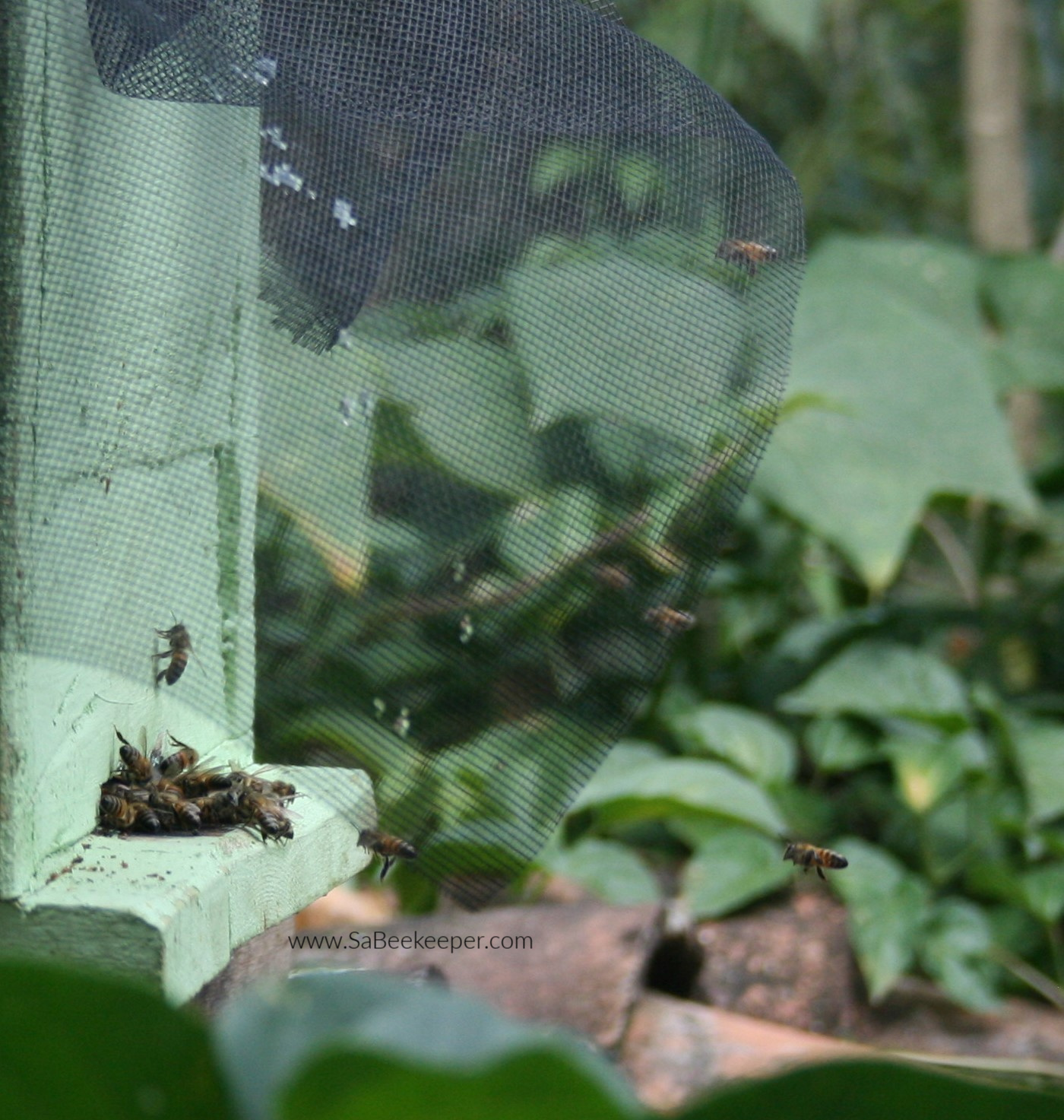
Very busy times for the bees, searching and getting familiar with the surroundings and to find food.
Thankfully there are some flowers around and in the garden.
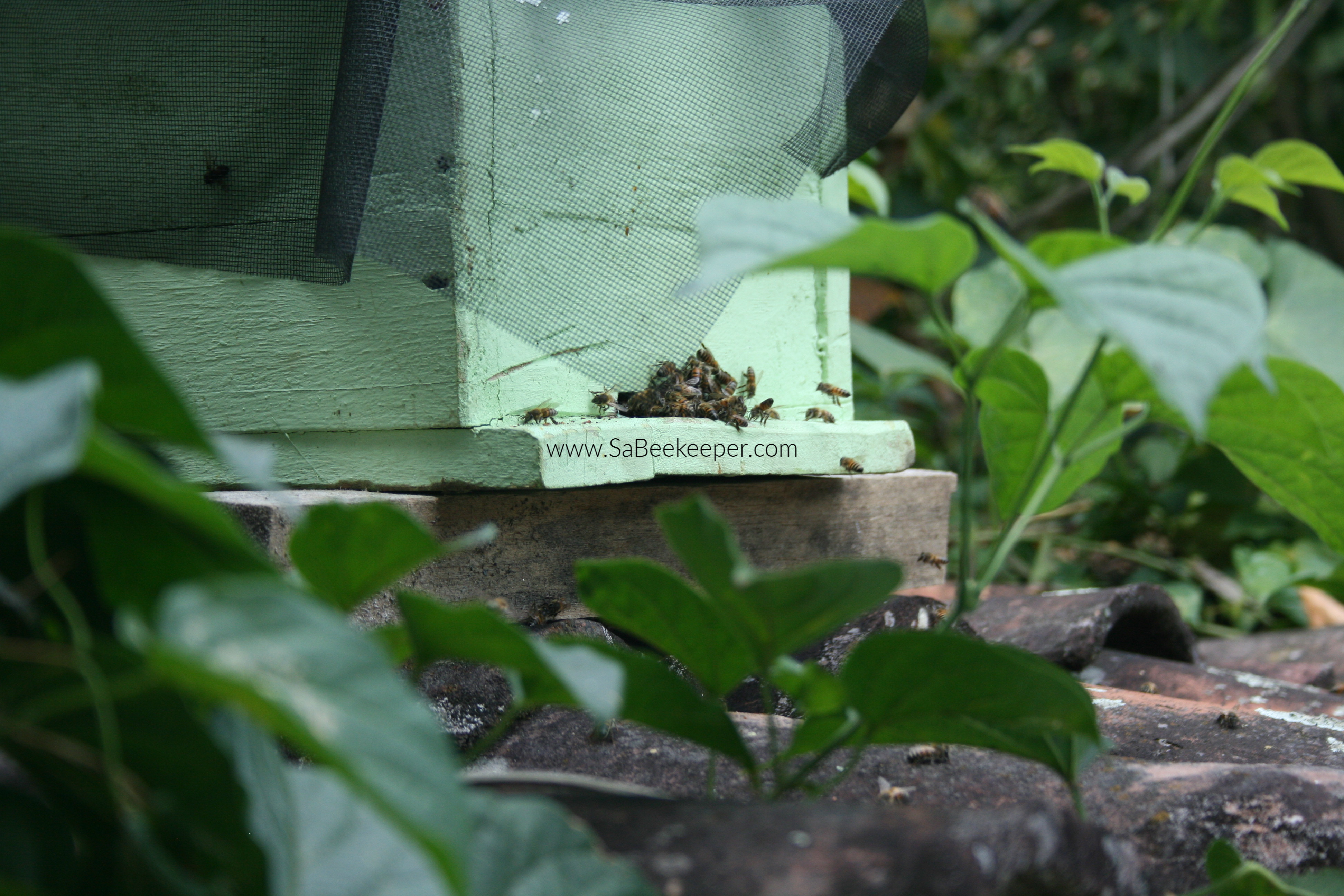
The Third Day
The following day the swarm of bees had settled down and were working well in and out of the box.
No more overcrowding and not knowing if they needed to come or go.
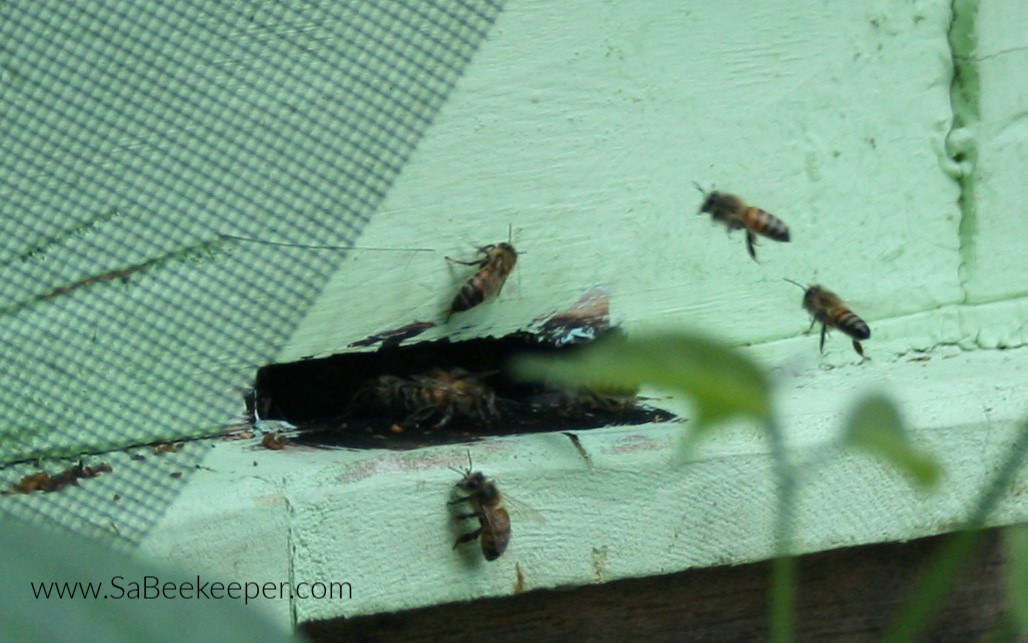
Note the worker bees had cleaned out the floor of the bee hive of wax or ground and grit,
that was left after bees and the queen were emptied into the catching box. Some of the old
combs were placed on the frames for the bees to stay and mend the old combs and continue
working in the box.
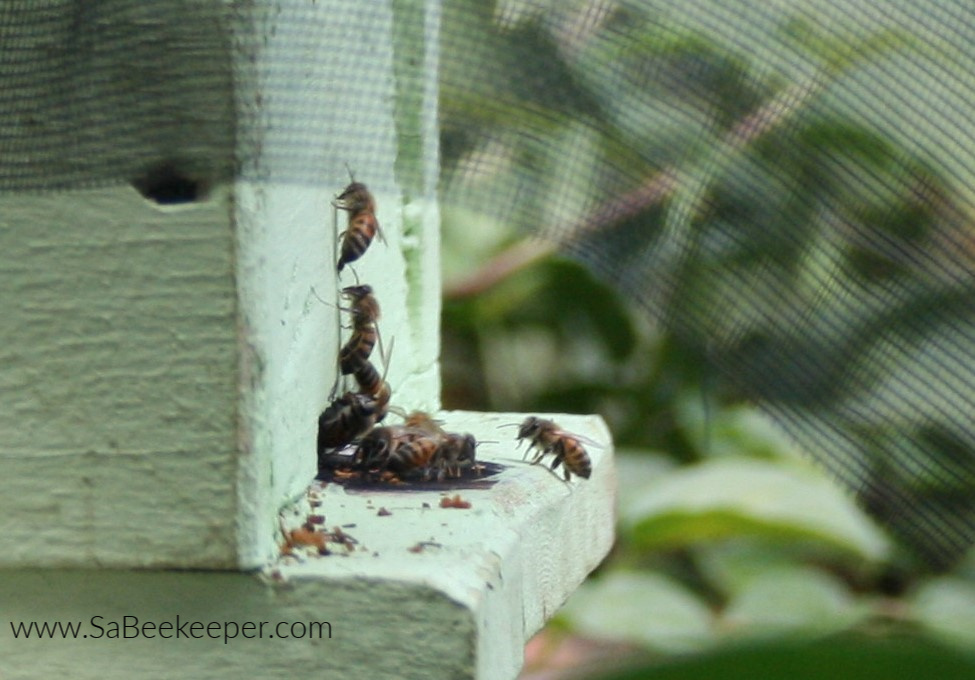
Note the cleaned out pieces of was and dirt on the landing of the bee hive. Above and Below.
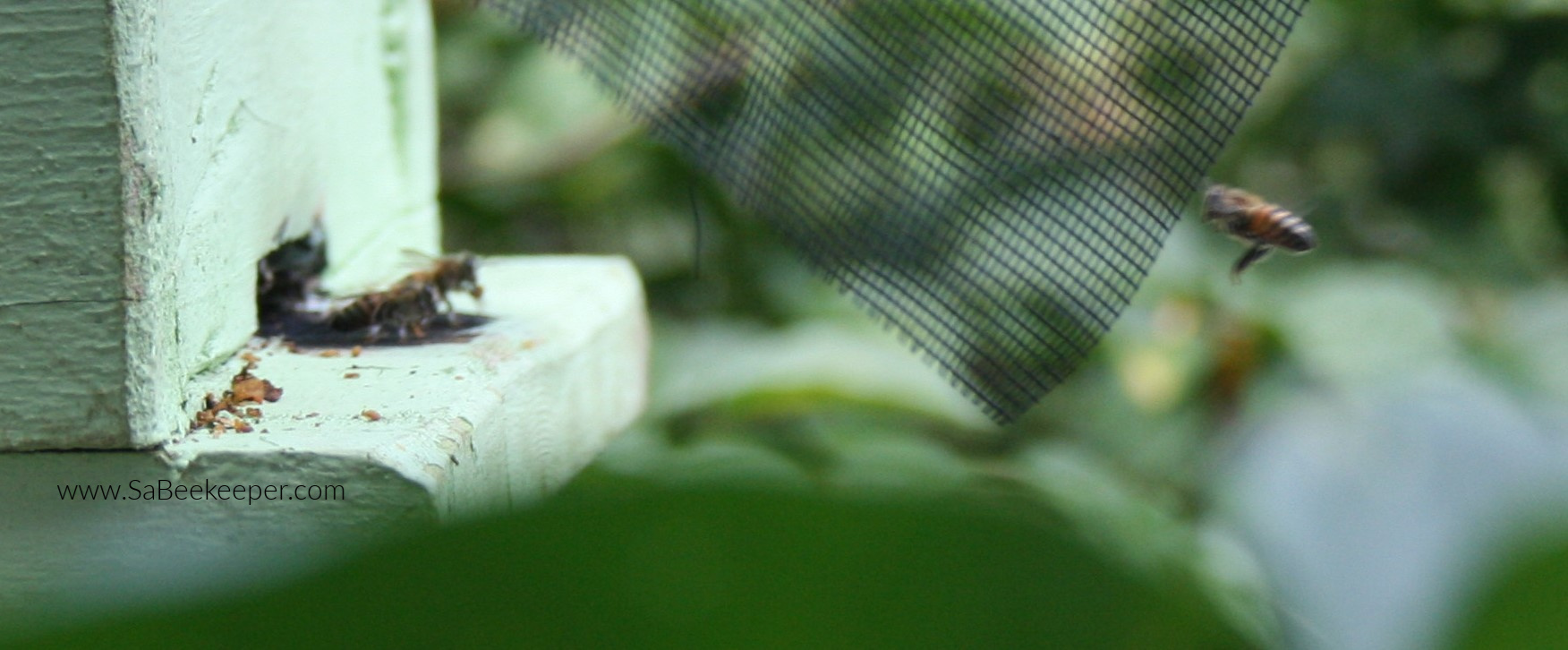
Busy Bees, working so nicely.
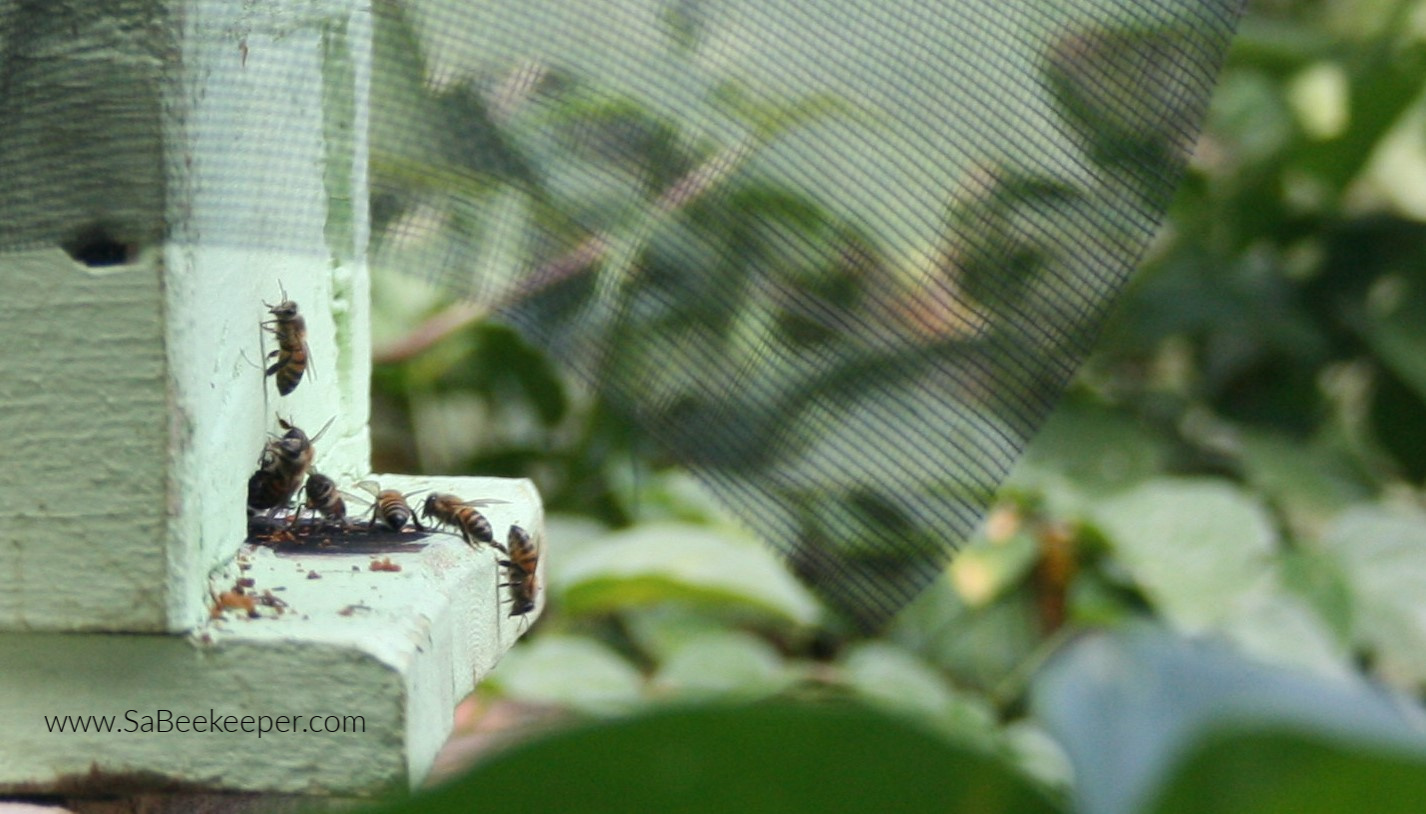
The local area they are in has a few plants and trees in flower at this time of the year.
May is the month this picture has been taken and in flower in the garden are cosmos flowers
and some sunflowers and orange creeper that is so sweet smelling. Behind in the valley are
blue gum trees (Eucalyptus Trees) that are also flowering.
The trees are an important source of food for the bees.
Flowers
The Sun Flower. Mountain in Vilcabamba, Loja, Ecuador.
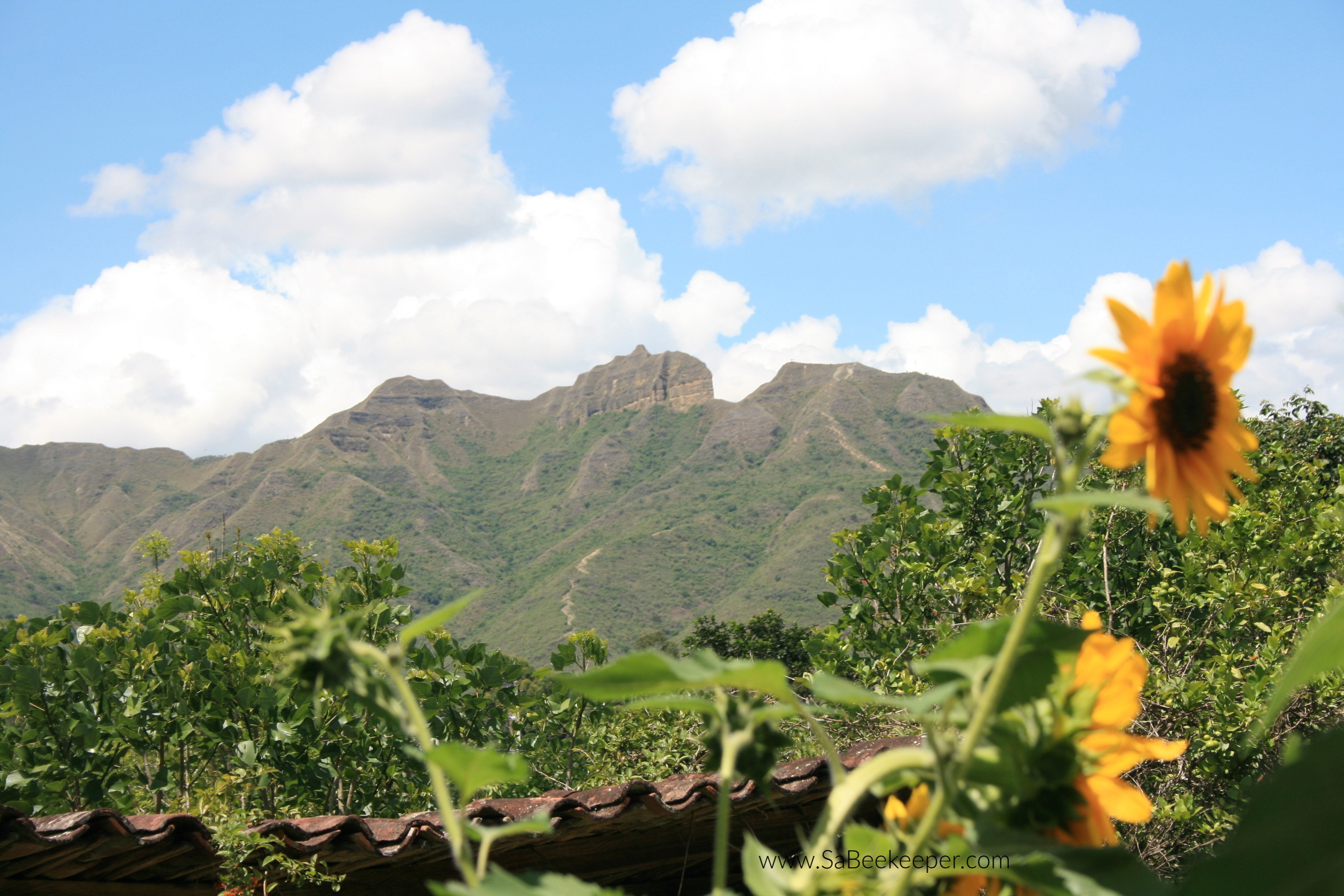
These are the flowers currently in May that are in flower in the garden.
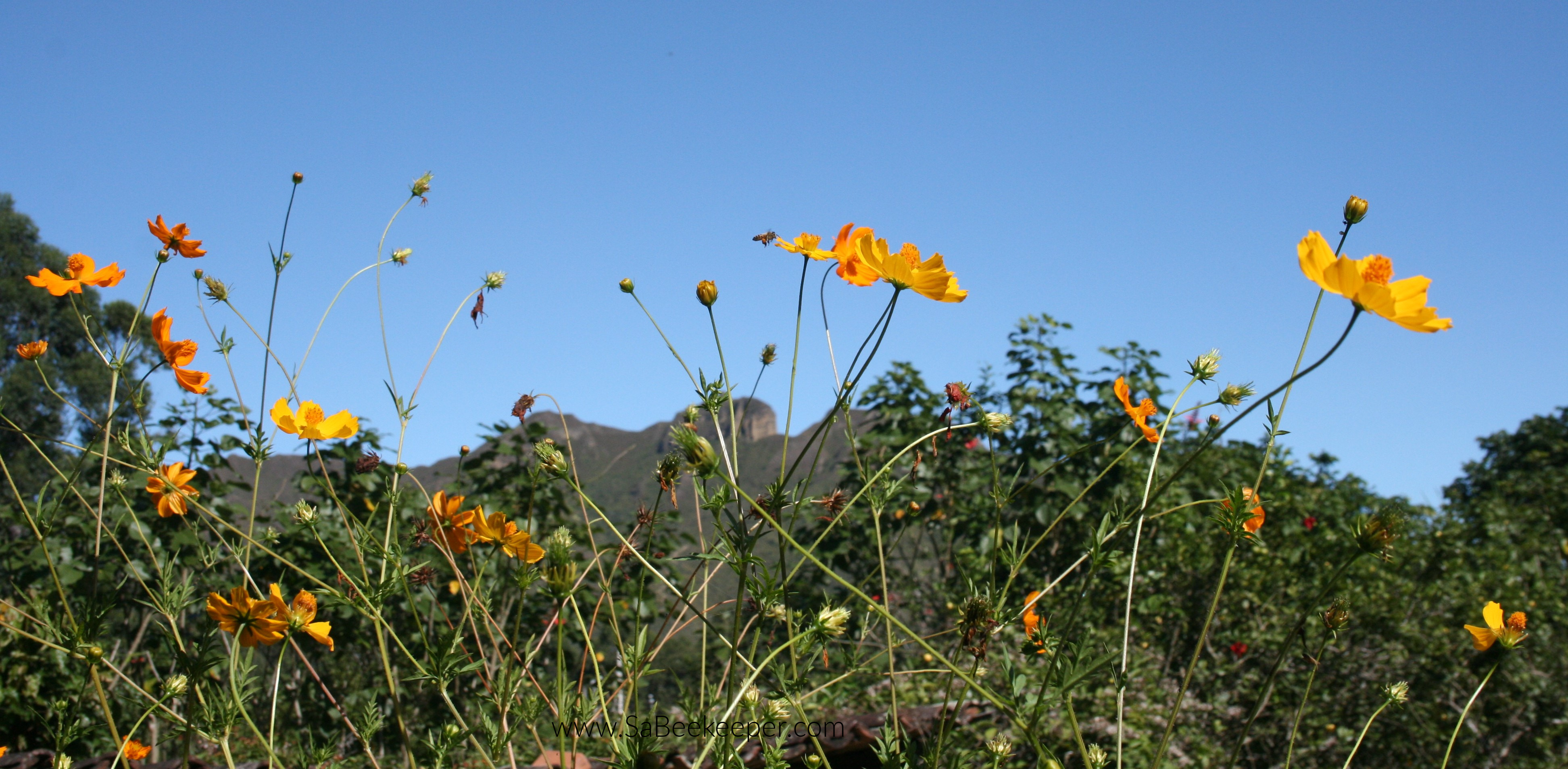
The cosmos flowers and the mountain view in the back ground. Note the Bee approaching the flowers.
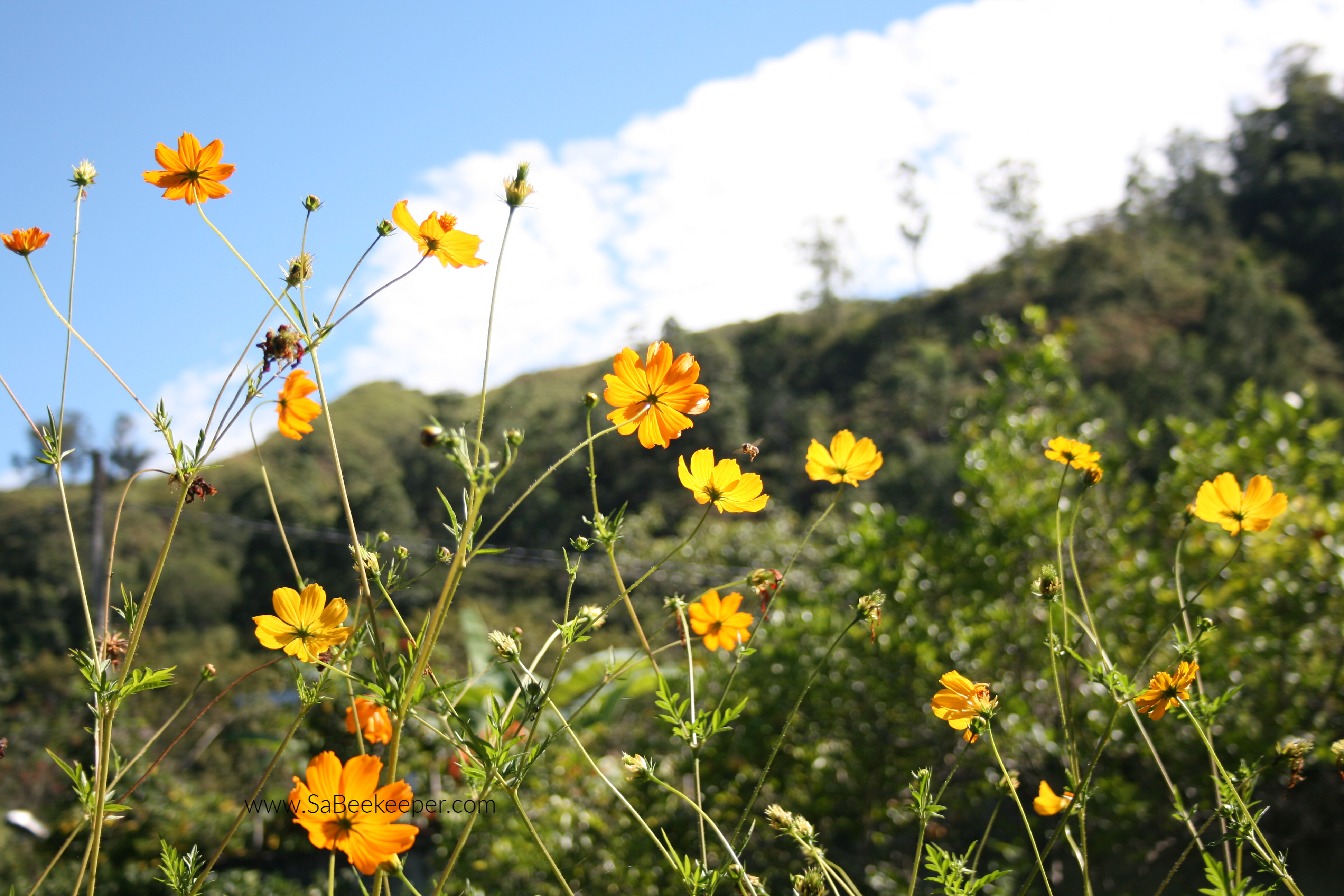
This sweet smelling orange creeper has flowered for the second time this year. It seems that when good
rain has fallen then so much flowers bloom.

Second Step.
A week later
The Bees have been working very well, a week later and they are bringing back white pollen. Probably from
the Eucalyptus trees that are now in flower, as they are almost 100 meters away. Note below the pollen
on the legs. White pollen. Below picture.
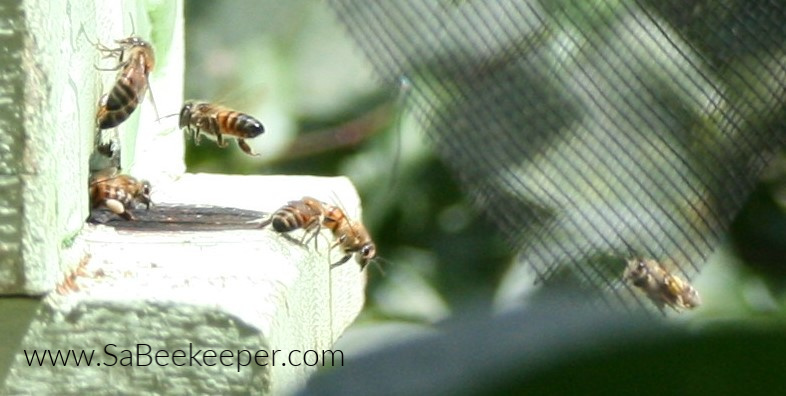
Some landing with pollen others leaving to go get more. Its like a very busy highway.
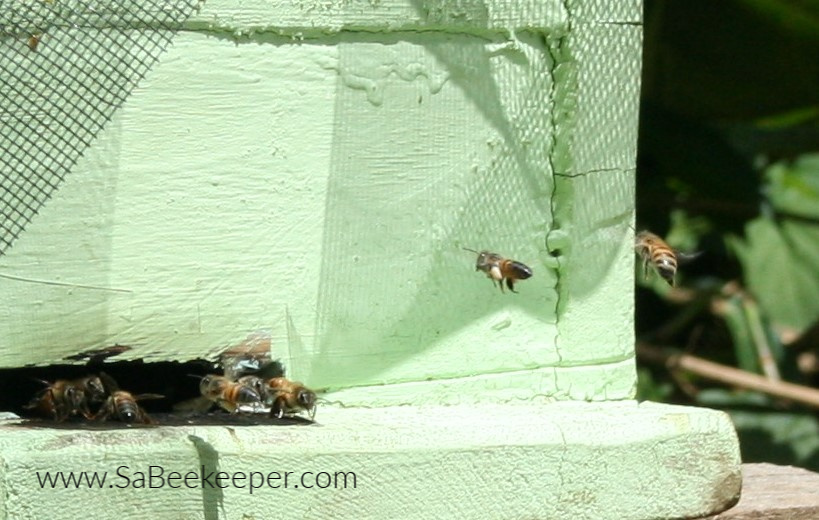
Bees coming out of the entrance and some landing with white pollen on their legs.
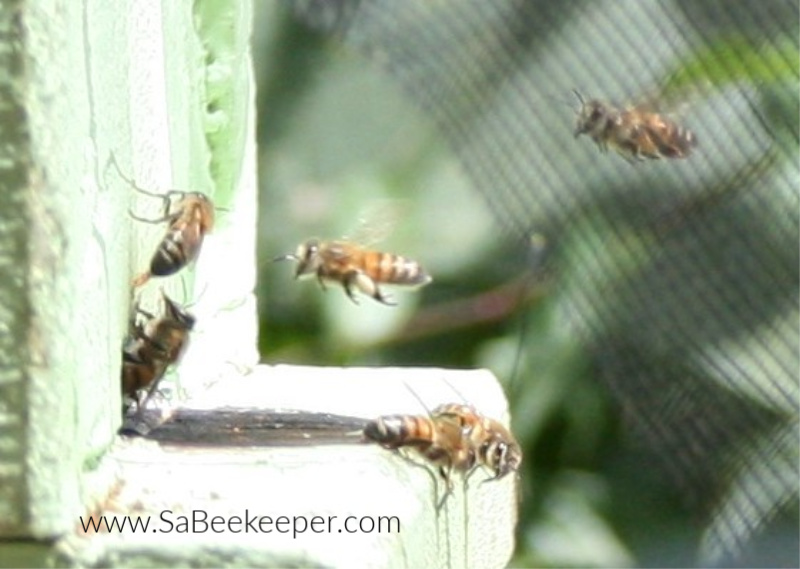
Its such a busy time, as in the mornings they start work early and seem to have siesta
around mid day. Maybe to all work in the hive as it is very hot. They work again later in the afternoon.
till sun set.When there is food they don’t mind working in the rain either.
They shoot out the hive entrance so fast and land just as fast. So interesting to observe.
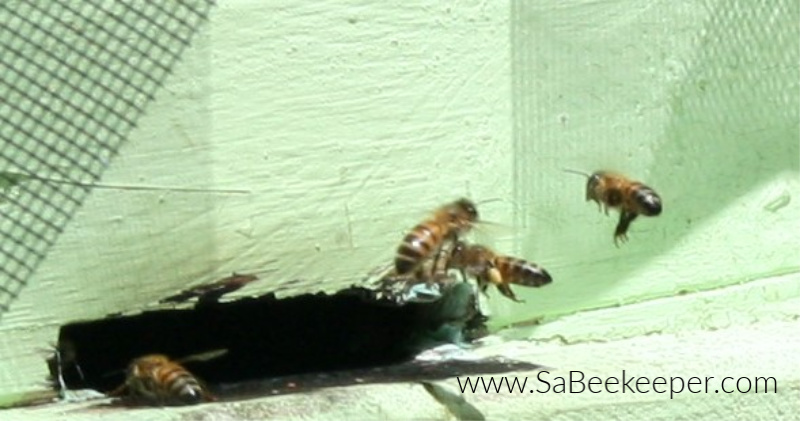
Third Step.
Was to change over from the catching box to the brood box. Which was very successful and
they were not protecting any honey but had plenty of brood on the old combs that were placed
on the frames when they extracted the bees from the tree trunk.
We place 4 more brood box frames with full wax sheets for them to build new combs on and
store some food. On the outer sides of the brood. which is normally in the middle of the box.
They have to keep the temperature correct for the new brood to survive.
Fourth Step.
The new brood is out and starting its work in the hive. Then the older bees start dying off.
As they only live for 45 days or so. The cleaner bees start pushing the dead bees out of the hives.
Carry them off and drop them, or the bees simply don’t make it to the hive.
We noticed the dead bees lying around the floor and verander as it was near the swarm.
Quit a few of them, so this swarm has been here for almost 45 days.
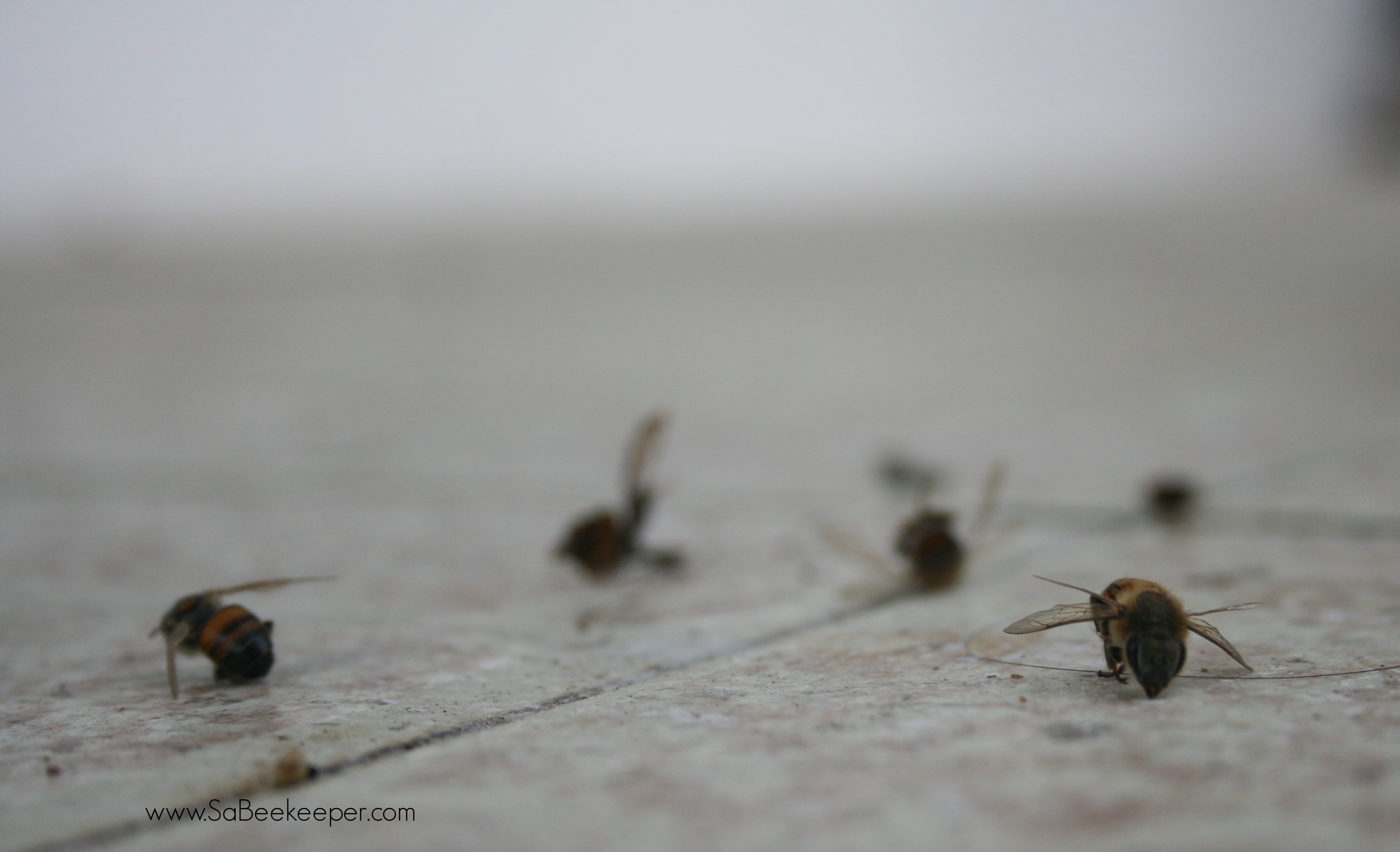
Old bees dying off after their 45 day life of working and rearing the new brood.
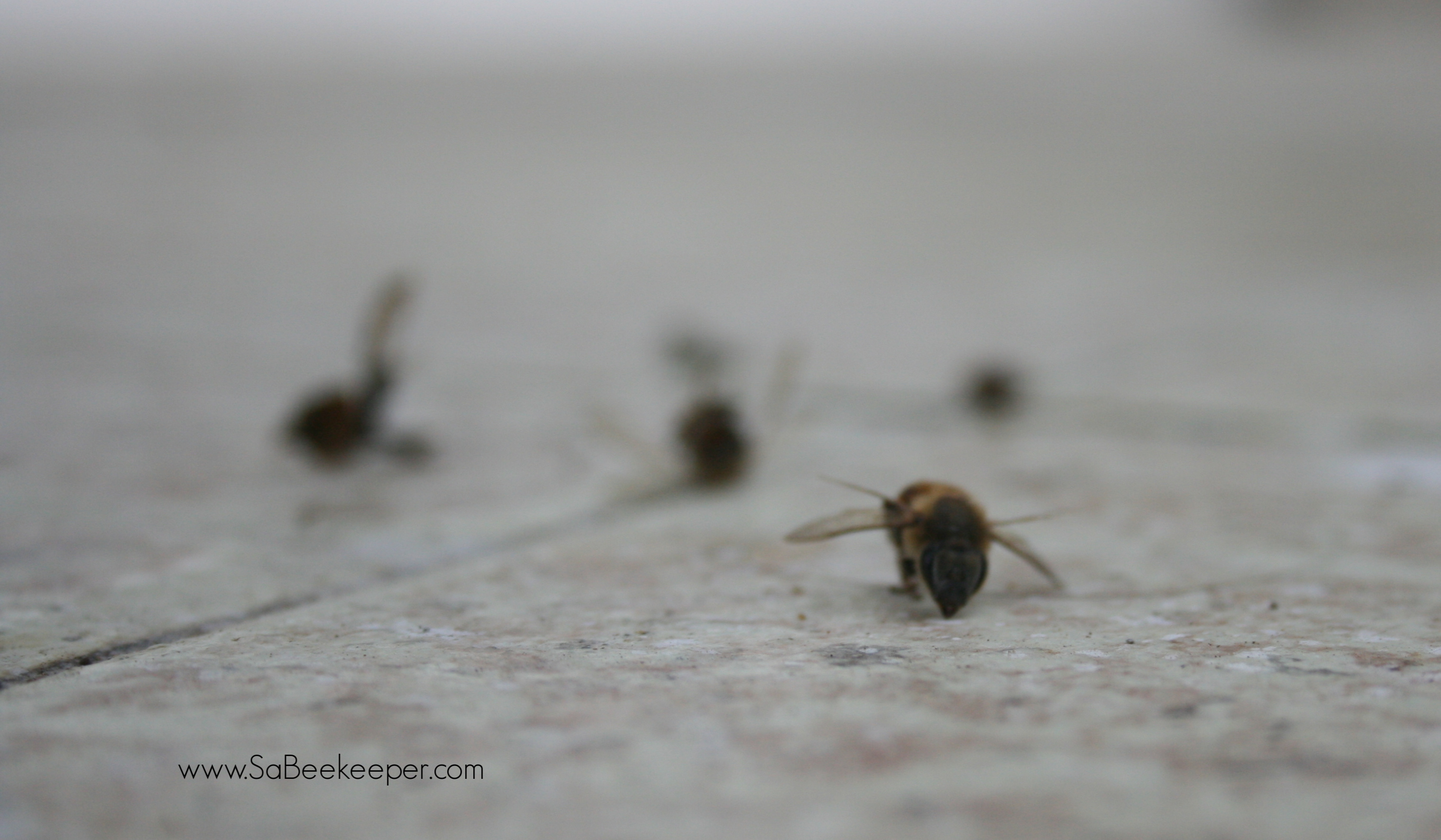
Now the cycle of the bee life starts again. Working, foraging, rearing the brood. Feeding the larvae.
learn more about the life cycle of the honey bee here. As well as see a swarm rescue in South Africa.
Follow the progress of this rescued hive in the newer posts.
The moving of the large swarm from home.
Leave a Reply